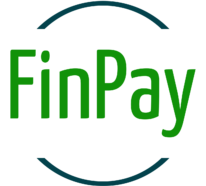As more businesses decide to make the jump to online, it’s important to make sure your business is protected from fraud. By accepting card payments on your website, you run the risk of disputes after goods have been delivered or services have been offered, resulting in what’s called a chargeback. Even the most reputable online businesses will struggle with chargebacks. For cardholders, chargebacks act as a shield against criminals or dishonest business practices. For merchants, however, chargebacks can pose a serious threat to revenue and business sustainability.
What is a chargeback?
A chargeback is initiated when your customer escalates a dispute against a charge from your business. Chargebacks are often encountered by e-commerce merchants, who should be aware of the different types of chargebacks and how to prevent them from negatively impacting their business.
Common reasons for chargebacks
Chargebacks come from customer disputes which can arise from different reasons ranging from technical errors to friendly fraud; or in some cases, actual fraud. Basically, when your customer doesn’t recognize a charge on their card they may raise a dispute.
- Technical Issues
- When a customer attempts to make a payment on your website but times out, their card may still be charged. In such a case we strongly advise to refund the customer to avoid a dispute. In case of a double charge, make sure you have both payment references, keep the first one and refund the second.
- Friendly Fraud
- When a customer makes a purchase with a card and then disputes the charge with their bank, without a legitimate reason to do so, this is called ‘friendly fraud’. This can happen when a customer wasn’t satisfied with the order or the payment descriptor has an unrecognizable name.
- Classic Fraud
- This happens when stolen cards are used to purchase items on your web shop. In this case the card holder rightfully disputes the payment.
How to fight (and win) chargebacks
The first step to avoid chargebacks is to manage customer expectations and offer great customer support by
- Providing detailed information to your customers about their order including exact images with; correct sizes & colours. Including your contact information; and your shipping and return policy; will help your customers contact you in case of a complaint, instead of raising a chargeback request.
- Emailing your customers for confirmation including the invoice and shipping details of the order. In case the cardholder’s name and the customer information is different, verify with the customer before shipping.
- Working with your payment service provider, in this case Elivalat, should you suspect any fraudulent activity with a customer or a specific transaction. Our team has extensive knowledge in fraud management and are here to help protect your business.
In conculsion
An effective strategy to fight chargebacks should combine technology and strong customer support. Working with your customers to clear up any confusion that may turn info a dispute will go a long way to avoiding chargebacks. For cases of actual fraud, reach out to us as soon as you suspect anything and we’ll work together to get all the relevant details to fight the chargeback.

